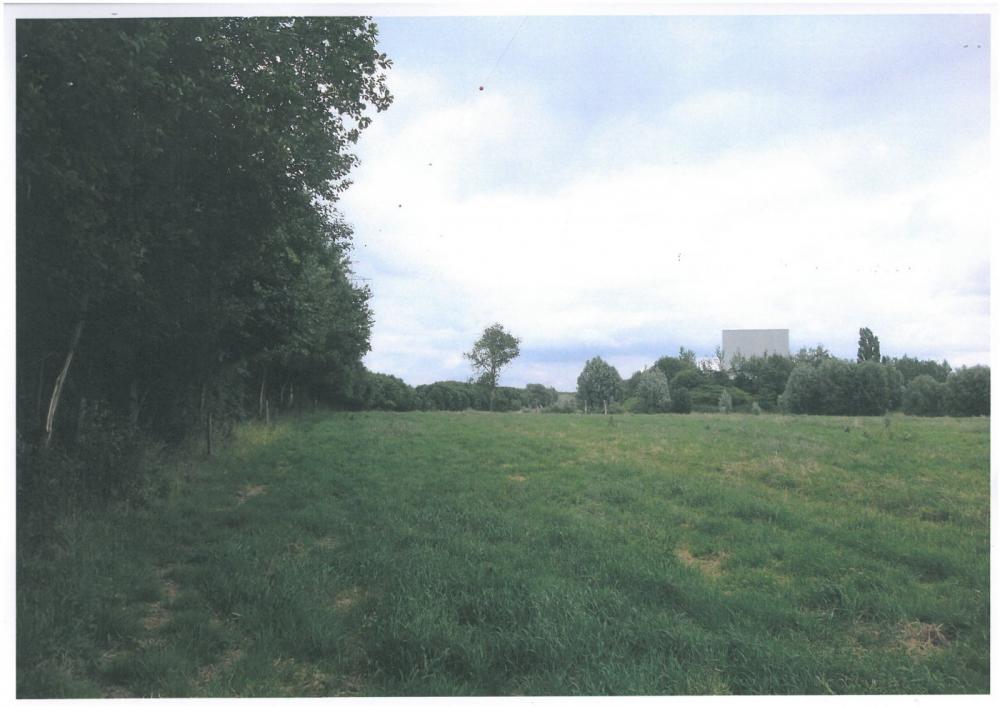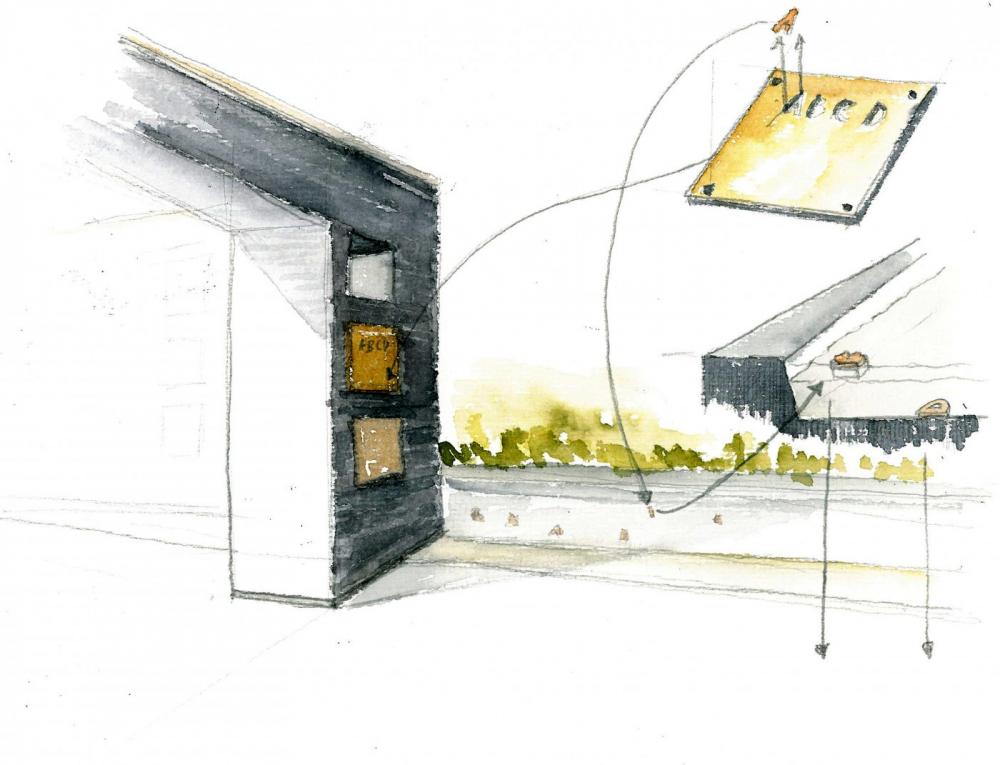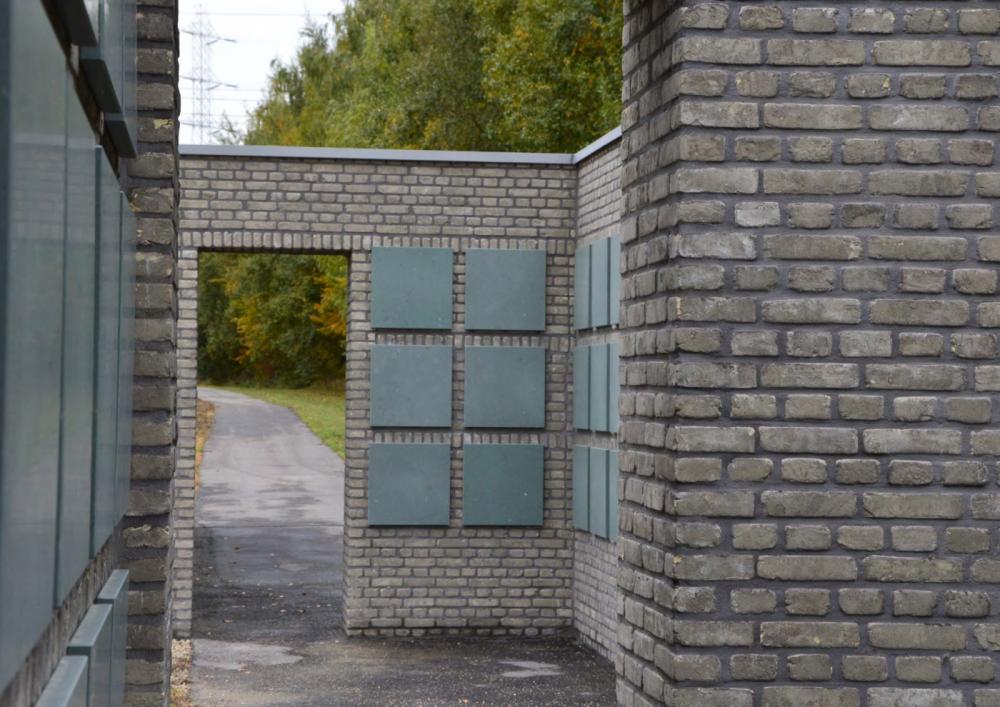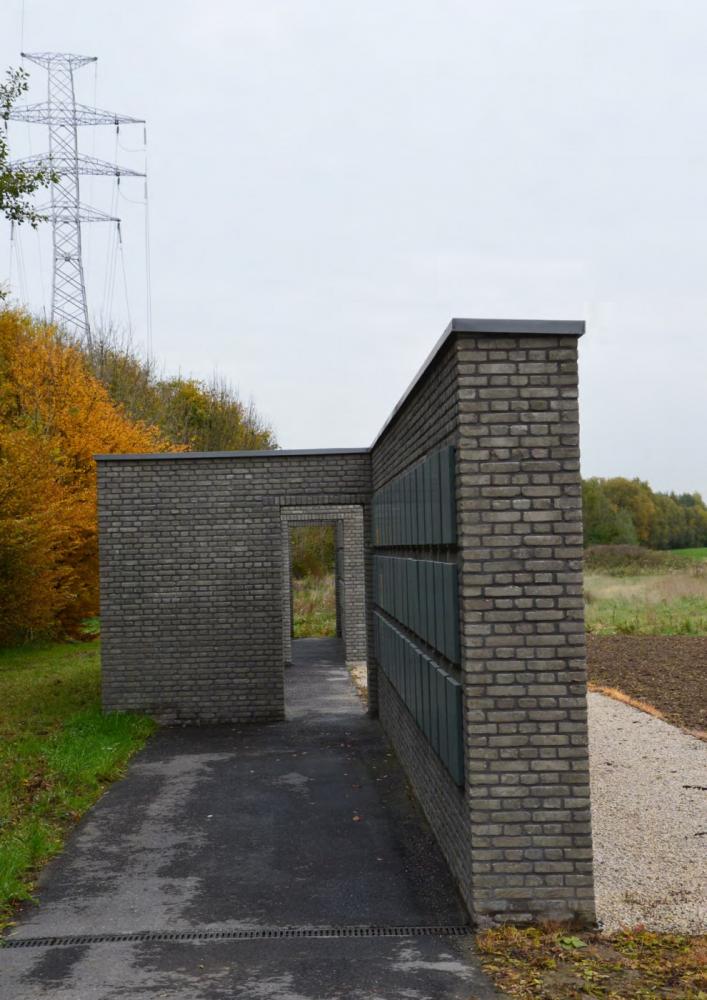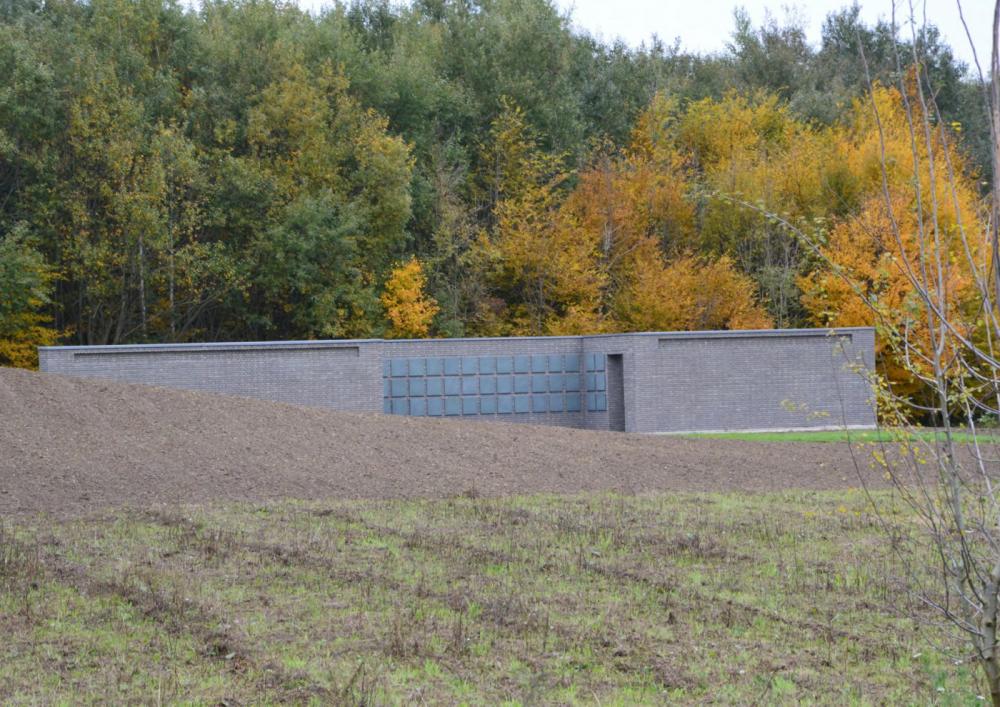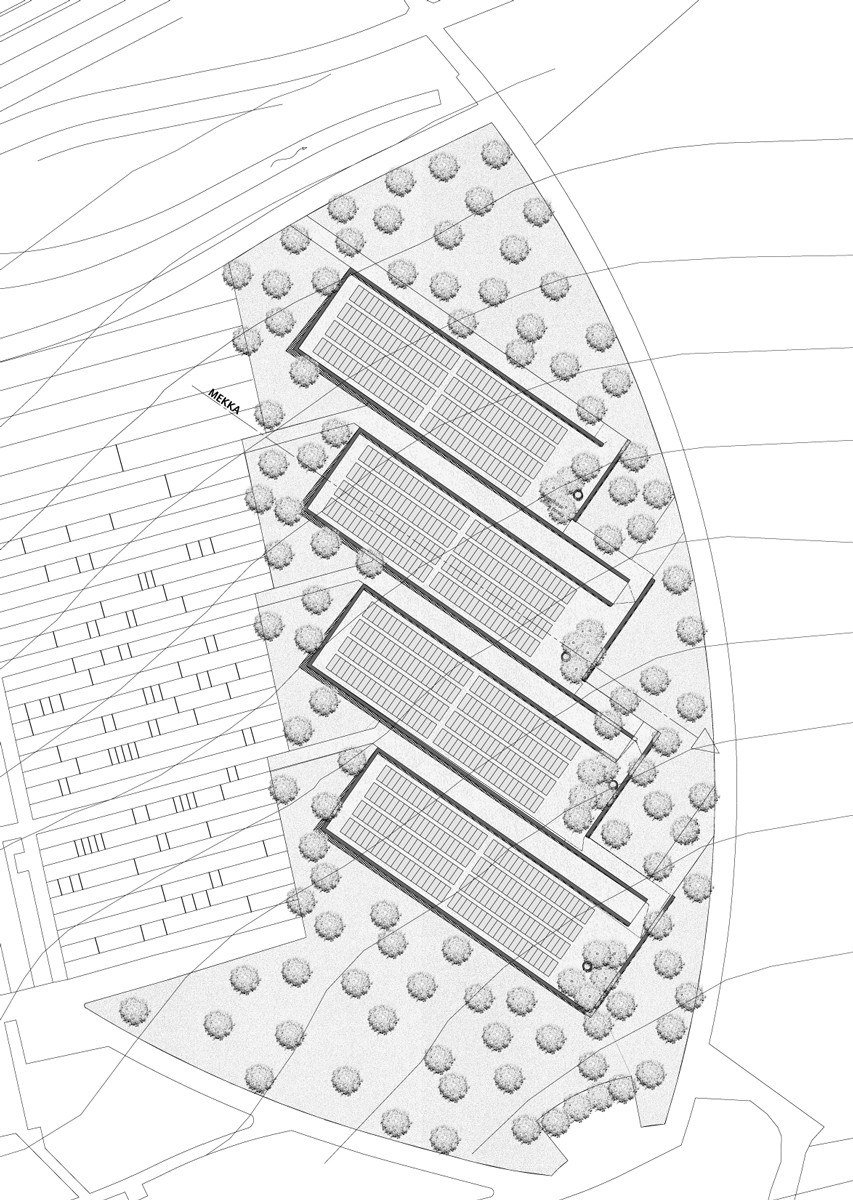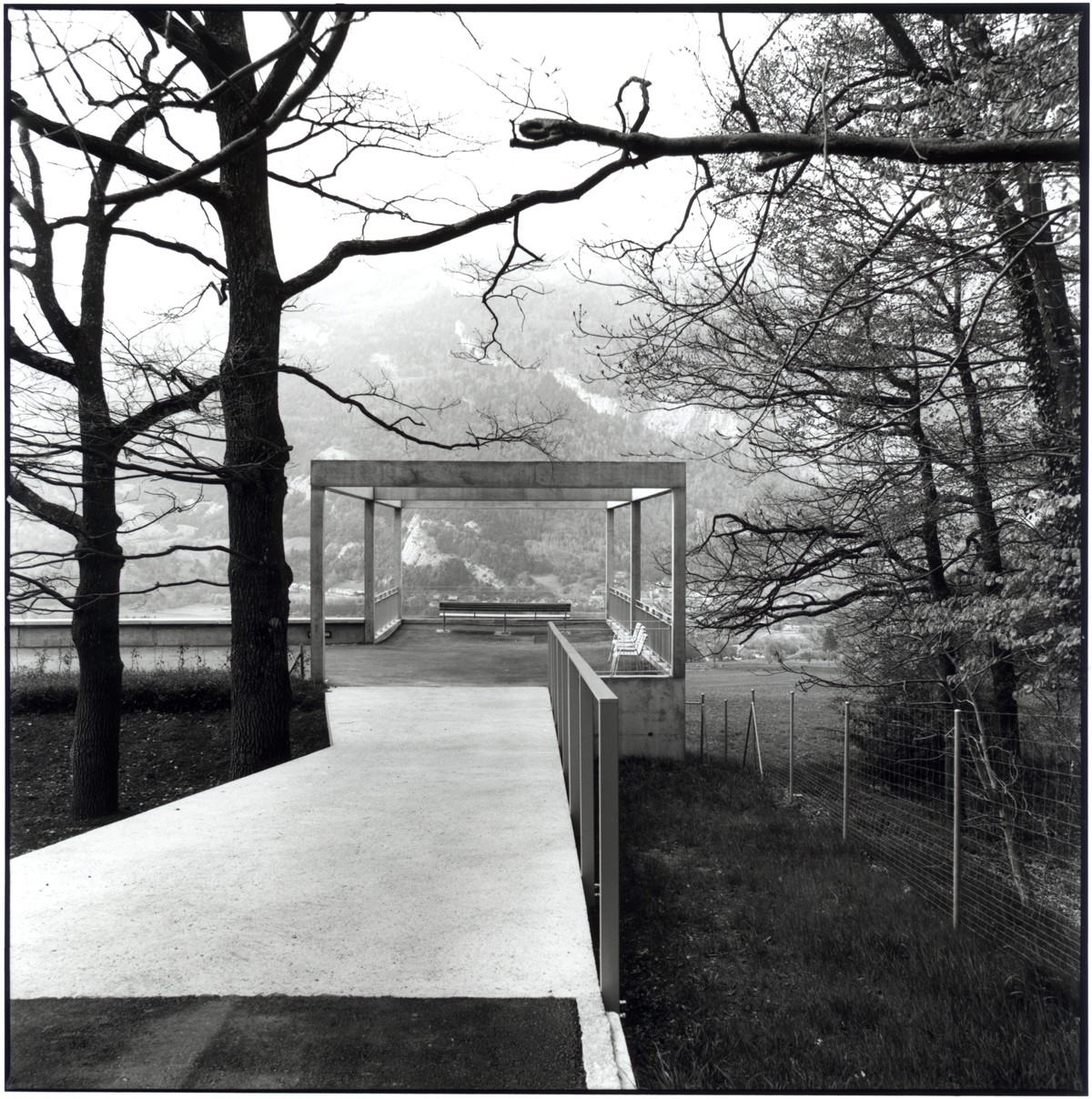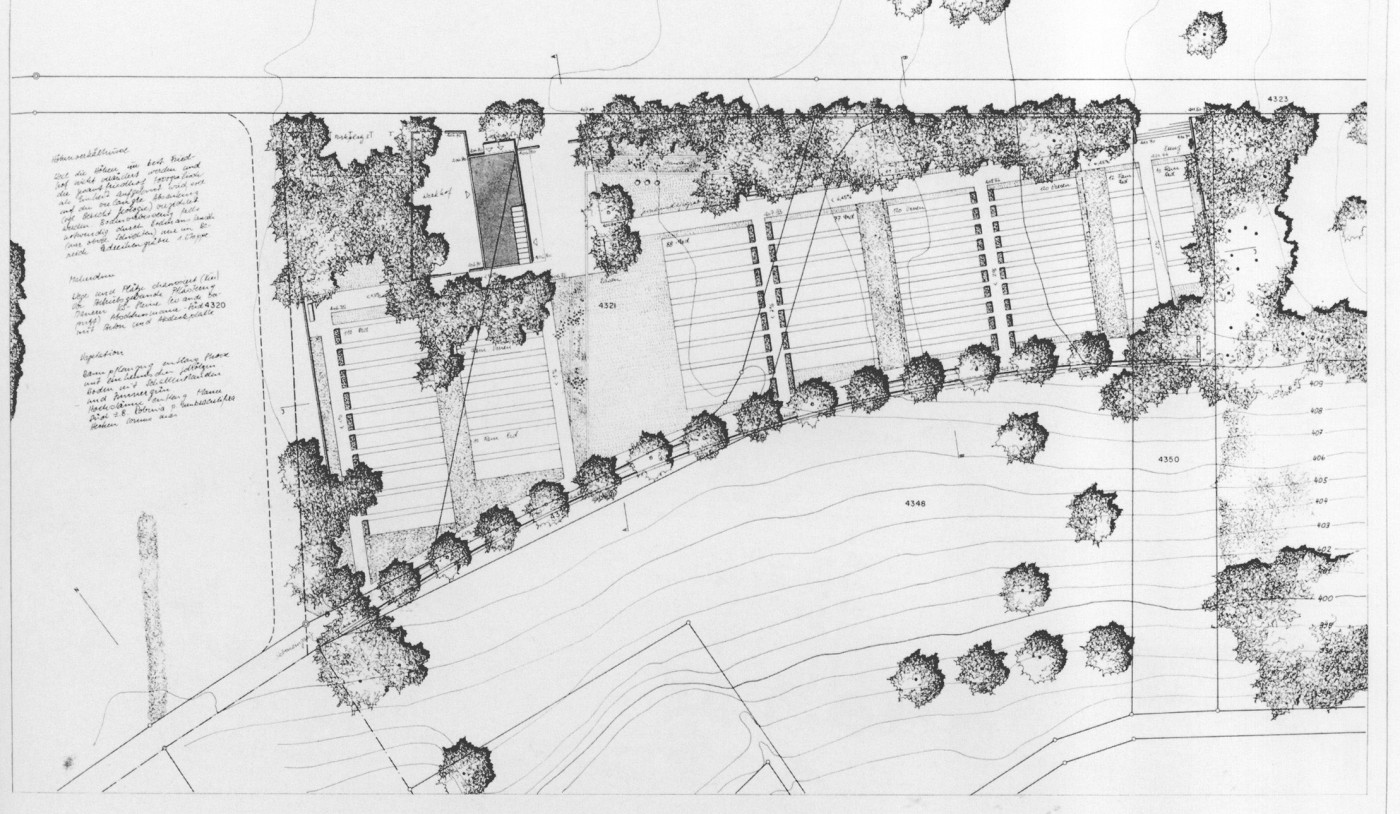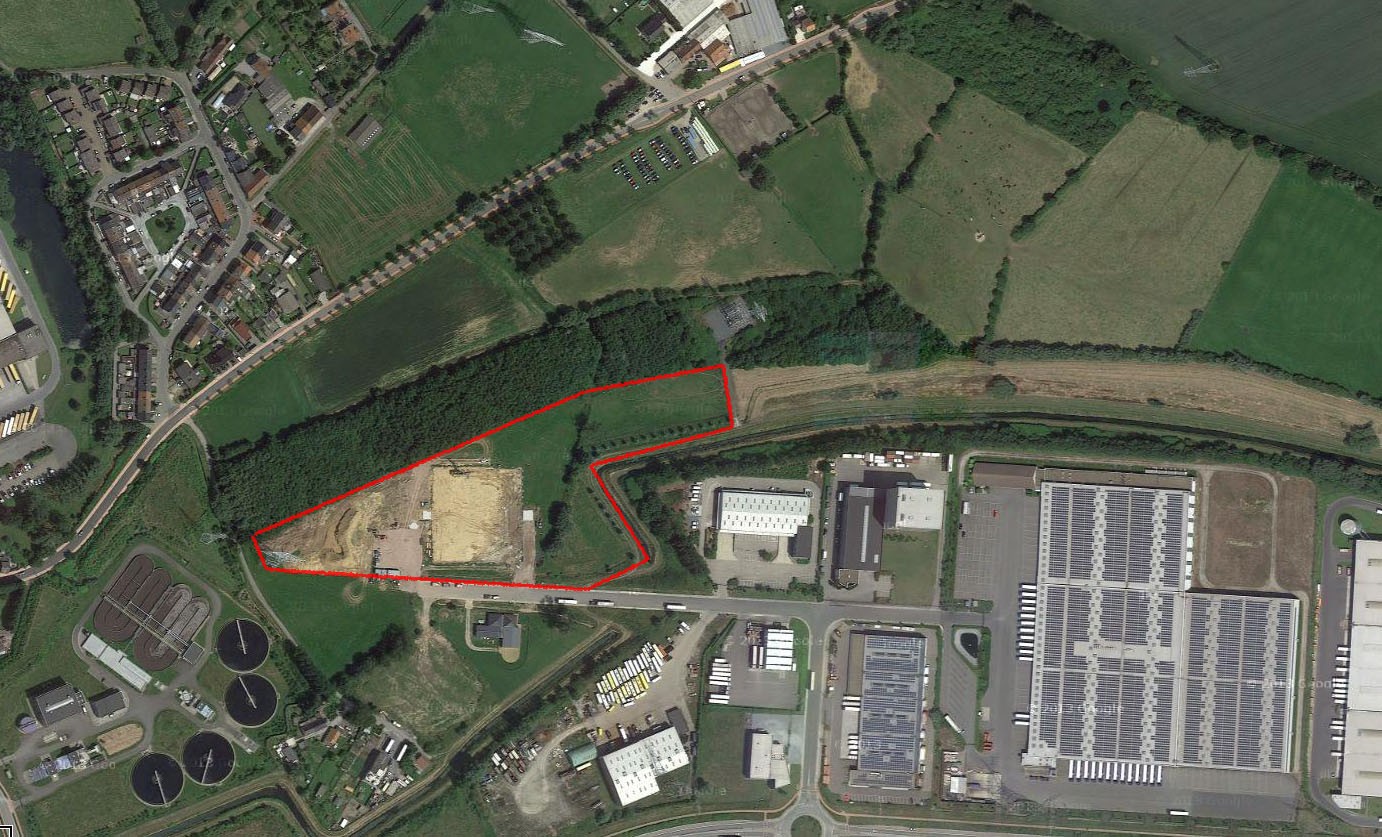
The new Crematorium in Zemst is situated within an ancient cultural landscape, which in recent years, has been attracting housing developments, businesses and other urban infrastructures. The concept for this facility, already very much bound to the theme of time, is a time-horizon overlay of new and old. Cultural landscapes are shaped both by their functions and by how their inhabitants use them. On the one hand, expressions of human use such as ditches, drainage and pathways become defining characteristics of the place. On the other hand, elements of the natural landscape also contributes powerful elements: woodlands, meadows, water and, of course, the horizon. The sum of these cultural and natural features embeds the crematorium within its landscape.
Meadows leading from the crematorium to the open countryside merge with paths and views to the horizon, with shallow ditches forming the edges of these meadows. Ashes are scattered among tree groups and individual fruit trees. An urn hill emerges from the meadow, reminiscent of the burial mounds (tumuli) characteristic of the Belgian landscape. In this gently rolling topography, the grasslands become a counterpart to the urn hill. Along the path from the crematorium to the urn wall, a long water basin acts as a companion to the mourning visitors. The flow of water is a metaphor for transience and timelessness. Bronze letters are removed from used columbarium cover plates, and placed in the water basin. They float on the water surface, shifting with the wind and currents, always adopting new configurations. They become a symbol for those who have passed away.


